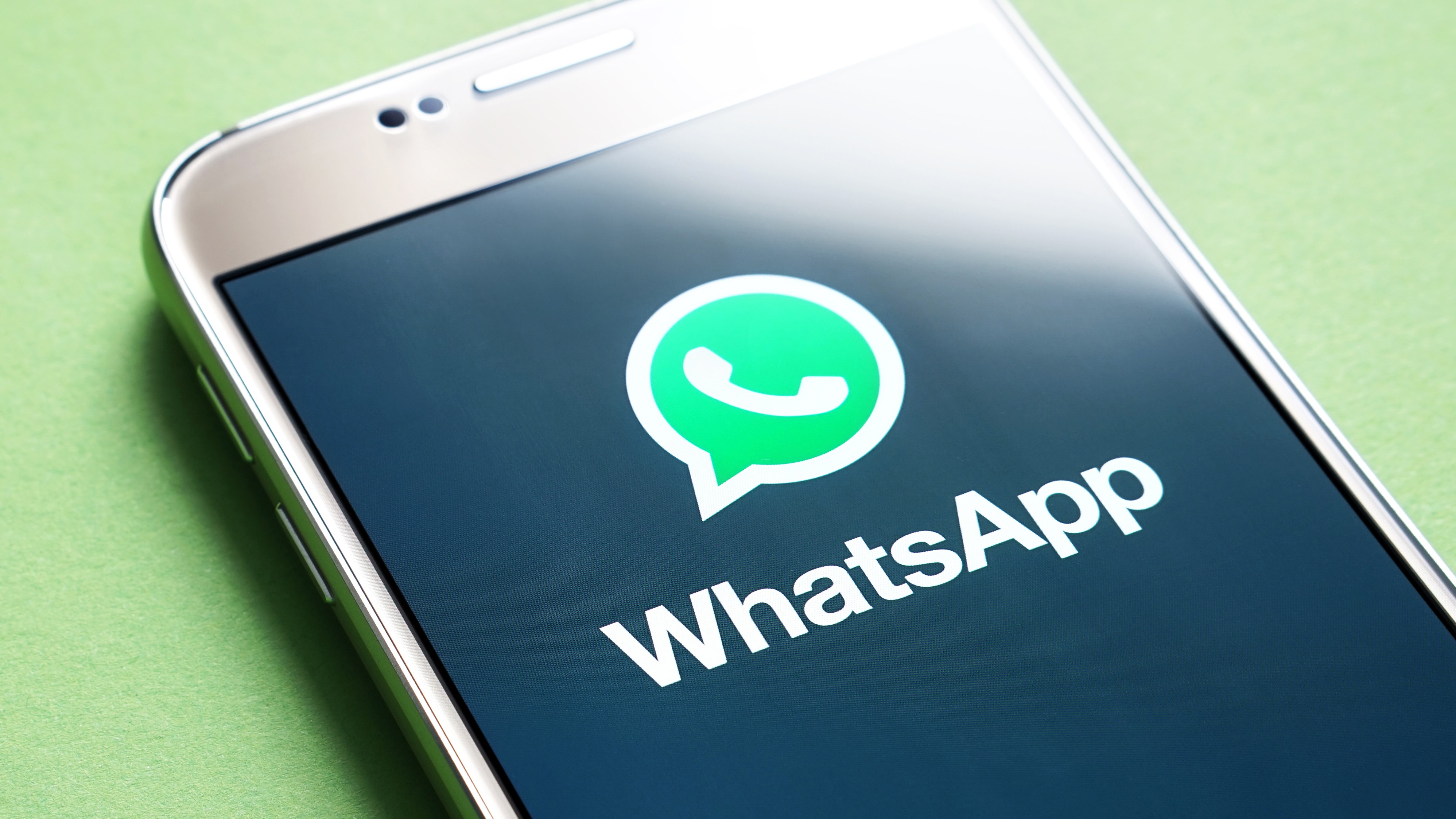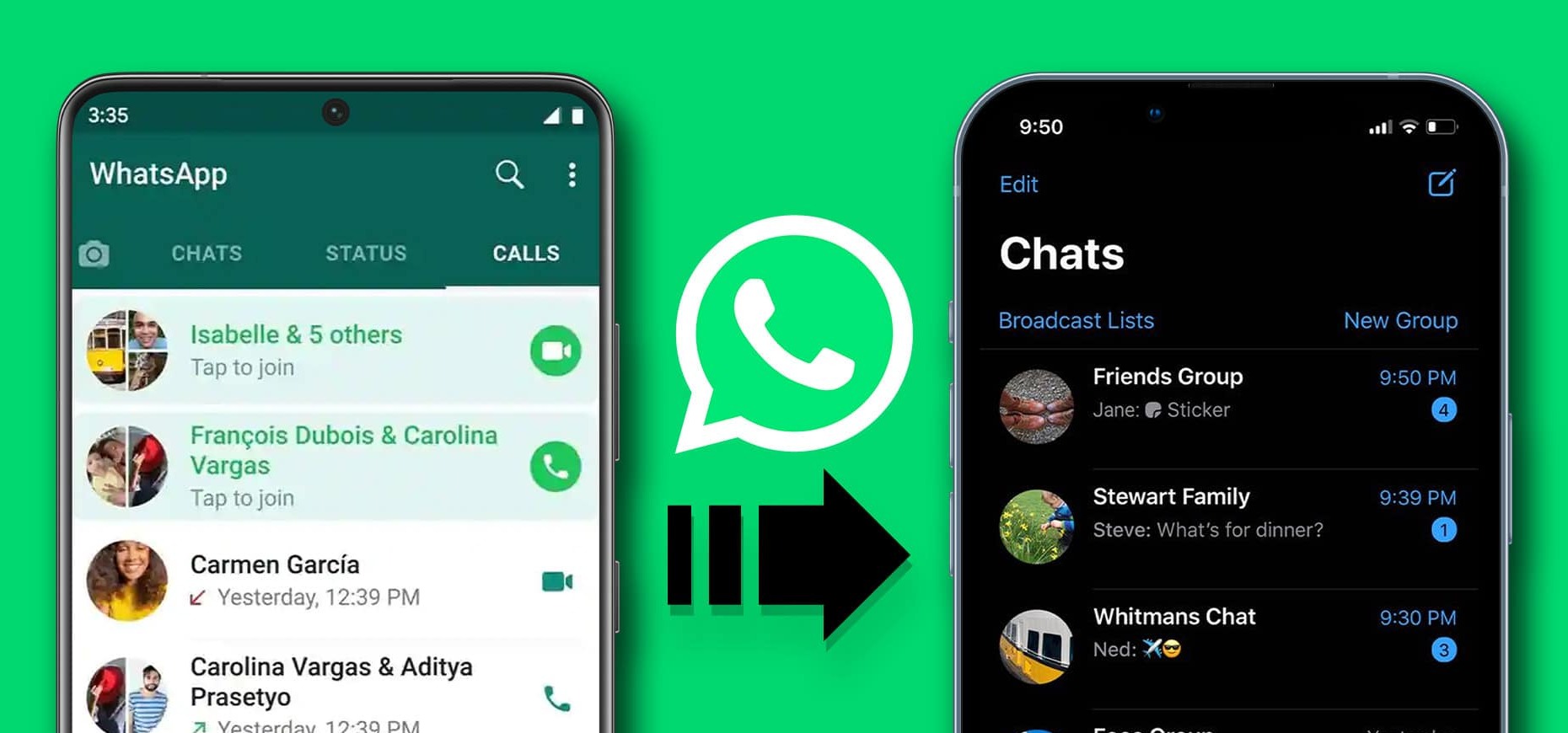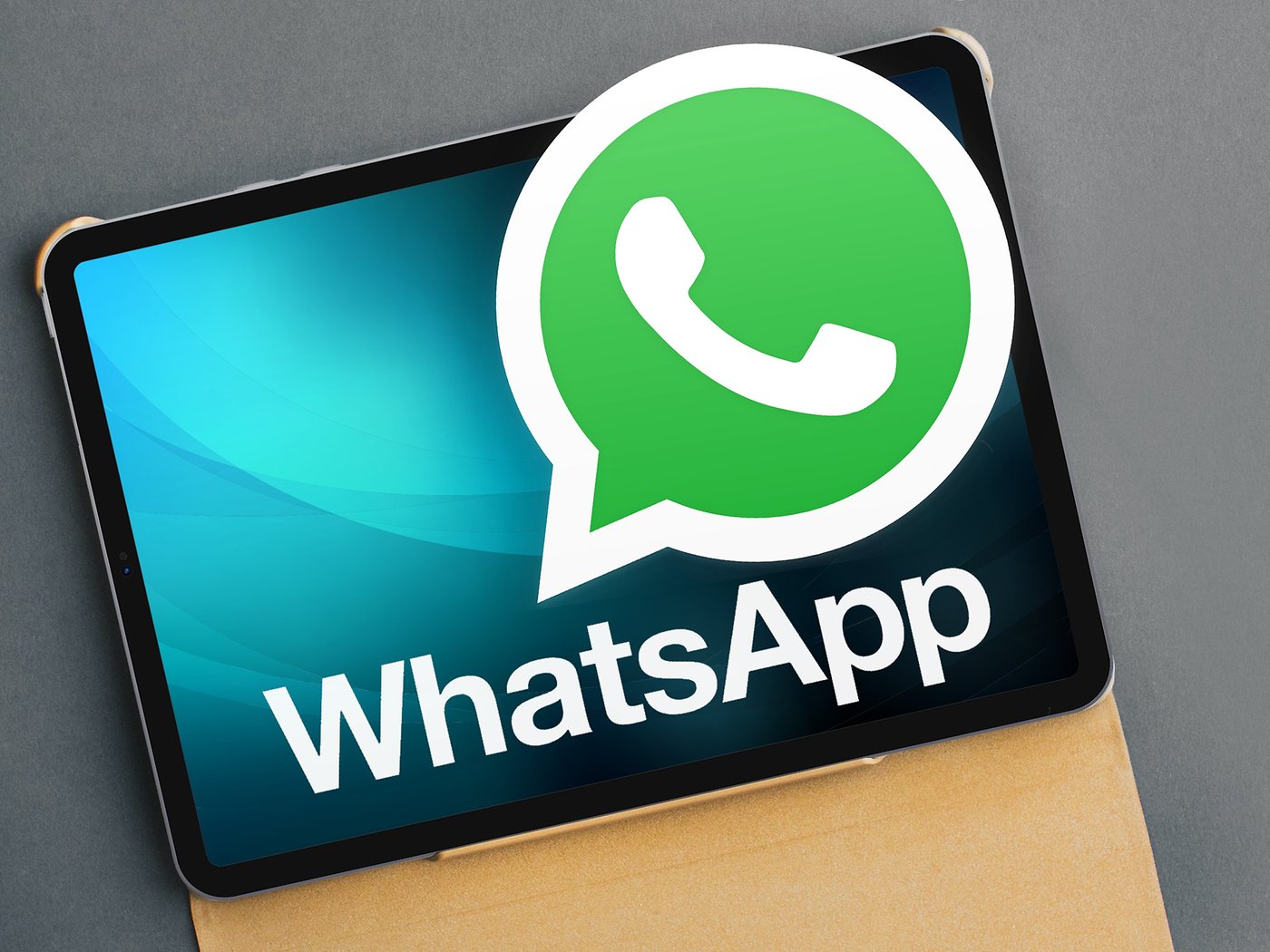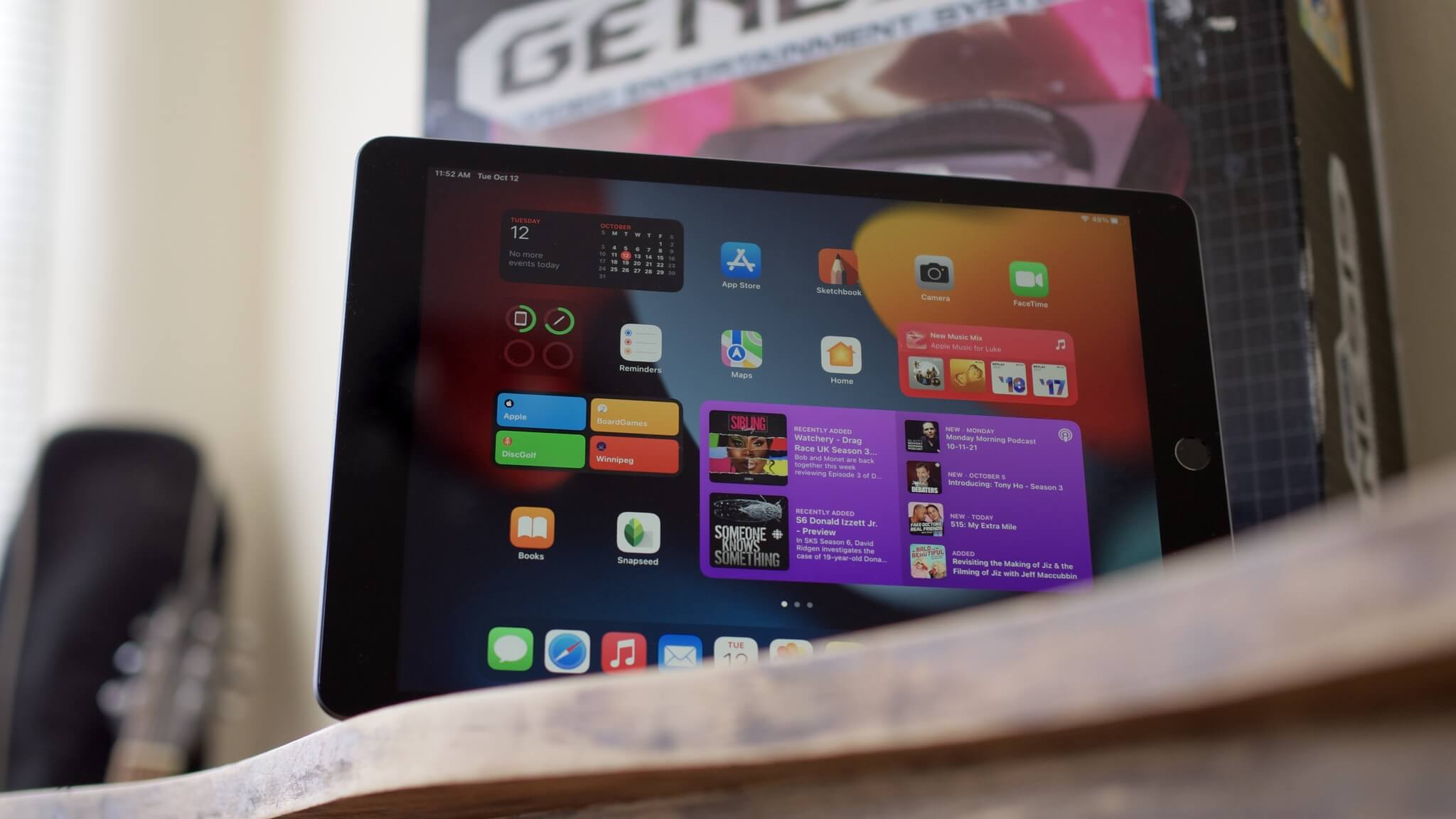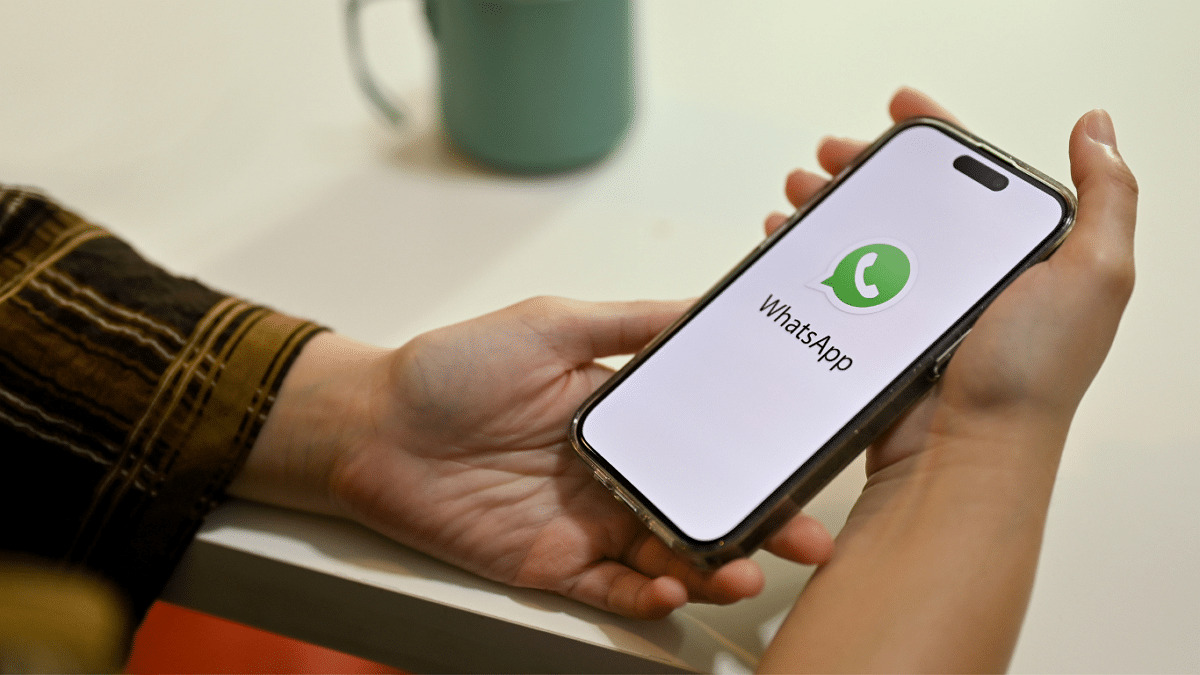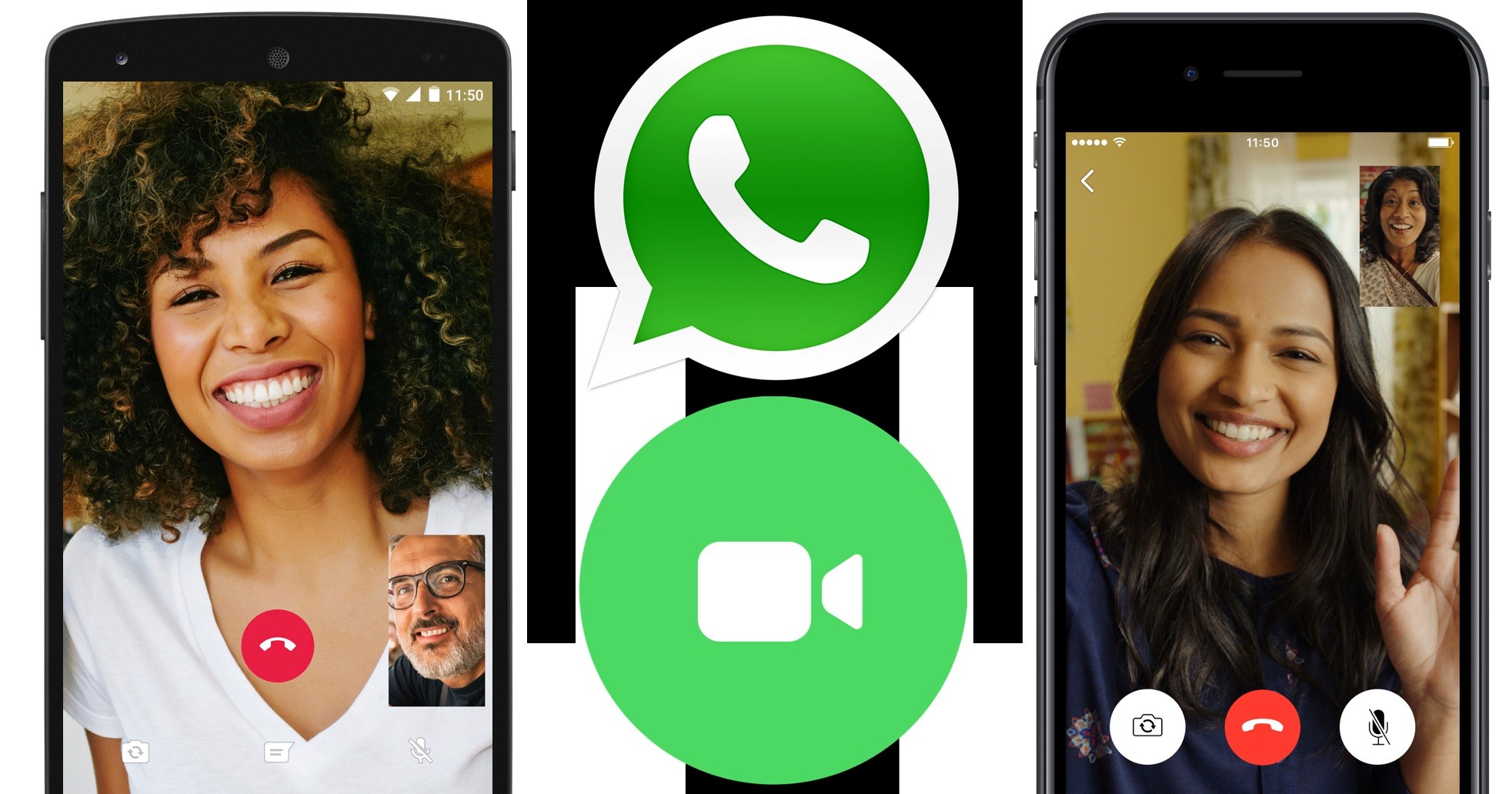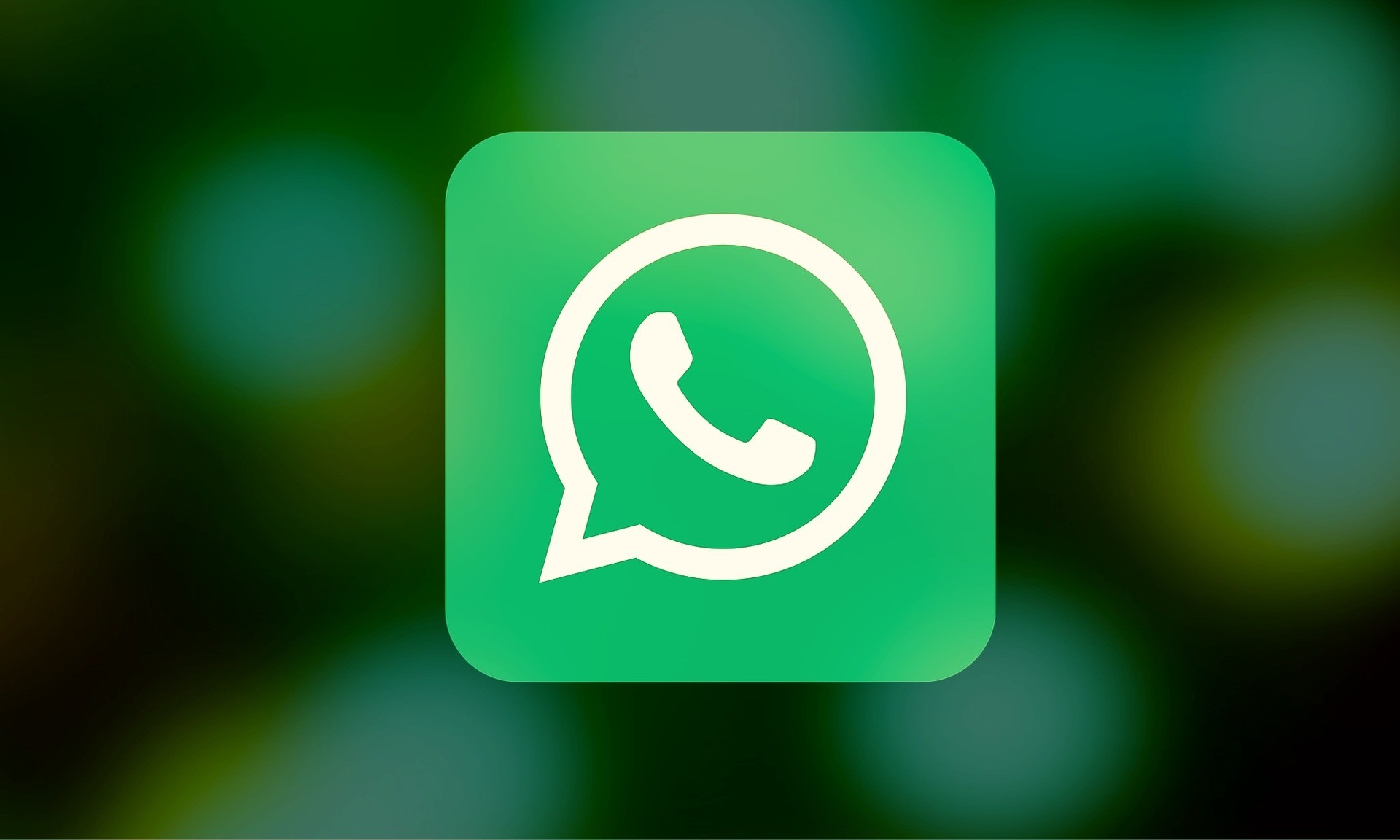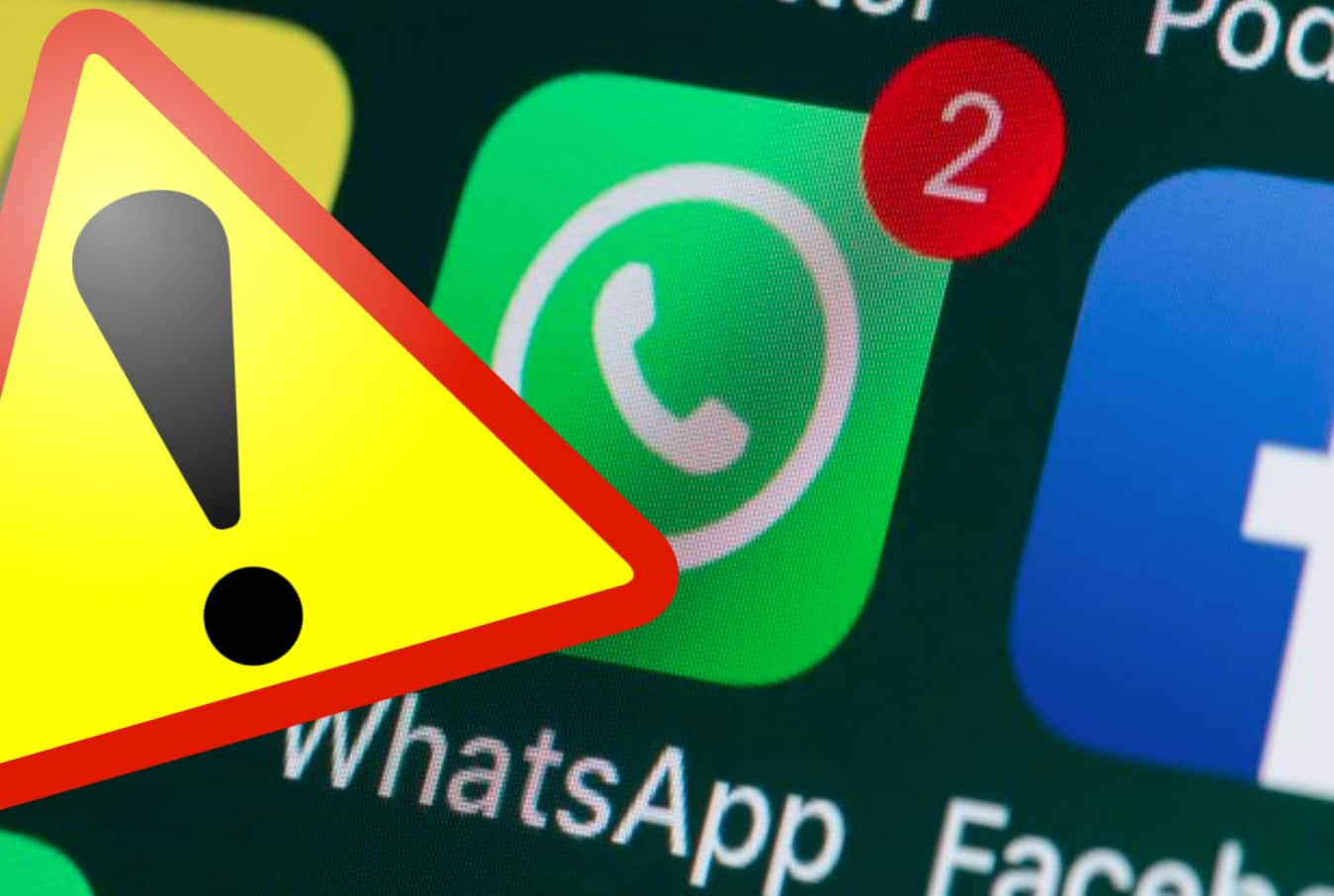Introduction
WhatsApp has become one of the most popular messaging apps in the world, connecting billions of people across the globe. With its user-friendly interface and a wide range of features, it has become an essential tool for communication on Android devices. Whether you want to chat with friends and family, share photos and videos, or make voice and video calls, WhatsApp provides a seamless and secure platform to do so.
In this guide, we will walk you through the process of using WhatsApp on your Android device. We will cover everything from installing the app and setting up your account to customizing your profile, adding contacts, sending messages, making calls, managing privacy settings, using WhatsApp Web, backing up and restoring your data, and troubleshooting common issues.
WhatsApp offers a simple and intuitive user experience, making it easy for users of all ages and technical abilities to navigate and enjoy the app. Whether you are new to WhatsApp or looking to learn more about its advanced features, this guide will help you make the most out of this powerful messaging platform on your Android device.
So, without further ado, let’s dive into the world of WhatsApp and discover how to use this versatile app to stay connected with your loved ones, share memorable moments, and simplify your communication experience on your Android phone.
Step 1: Installing WhatsApp on your Android device
In order to use WhatsApp on your Android device, you first need to install the app. Follow these simple steps to get started:
- Open the Google Play Store on your Android device.
- Search for “WhatsApp Messenger” using the search bar at the top of the screen.
- Tap on the WhatsApp Messenger app from the search results.
- Click on the “Install” button.
- Once the installation is complete, tap on the “Open” button to launch WhatsApp.
WhatsApp will now prompt you to set up your account and verify your phone number. This will require a valid phone number that is connected to your Android device.
Note: WhatsApp requires access to certain permissions on your device, such as access to your contacts, media files, and camera. Make sure to grant these permissions during the installation process for optimal functionality.
After the installation is complete, you will see the WhatsApp icon on your home screen or in your app drawer. Tap on the icon to launch the app and proceed to the next steps in our guide.
WhatsApp regularly releases updates to improve performance, fix bugs, and introduce new features. It is important to keep your WhatsApp version up to date to ensure a smooth and secure messaging experience. To update WhatsApp, open the Google Play Store, search for WhatsApp Messenger, and tap on the “Update” button if an update is available.
Now that you have successfully installed WhatsApp on your Android device, let’s move on to the next step: setting up your WhatsApp account and verifying your phone number.
Step 2: Setting up your WhatsApp account
Once you have installed the WhatsApp app on your Android device, the next step is to set up your account and verify your phone number. Follow these instructions to get started:
- Open the WhatsApp app on your Android device.
- Read and accept the Terms of Service and Privacy Policy.
- On the welcome screen, you will be prompted to enter your phone number. Make sure to enter the correct number, as this will be used for verification purposes.
- Select your country from the dropdown list, and enter your phone number without any spaces or dashes.
- Tap on the “Next” button.
- WhatsApp will send a verification code to the phone number you provided. Wait for the code to arrive via SMS or a phone call.
- Enter the verification code in the app.
- If the verification is successful, you will be prompted to set up your profile. You can add a profile photo and set your name or a display name.
It is important to note that WhatsApp requires a valid phone number for verification purposes. This helps ensure the security and authenticity of the accounts on the platform.
If you encounter any issues during the verification process, make sure your phone has a stable internet connection and that you have entered the correct phone number. You can also choose to receive the verification code via a phone call if you’re facing difficulties with the SMS verification.
Once your account is set up and verified, you can start exploring the various features and settings of WhatsApp. In the next steps, we will guide you through customizing your WhatsApp profile, adding contacts, and sending messages.
Step 3: Customizing your WhatsApp profile
Once you have set up your WhatsApp account and verified your phone number, it’s time to personalize your profile. Customizing your WhatsApp profile allows you to add a profile photo, set a status, and customize your display name. Here’s how you can do it:
- Open the WhatsApp app on your Android device.
- Tap on the three-dot menu icon in the top right corner of the screen and select “Settings.”
- In the Settings menu, tap on your profile name or the placeholder image next to it.
- In the Edit Profile screen, you can add a profile photo by tapping on the camera icon. Select a photo from your gallery or take a new photo using your device’s camera.
- Under your name, you will find the “About” section. Tap on it to set a status that will be visible to your contacts. You can choose from pre-set options or write a custom status.
- Below the About section, you can edit your display name. This is the name that will be shown to your contacts in their WhatsApp chats and contact lists.
Customizing your WhatsApp profile is a great way to make your account more personal and easily recognizable for your contacts. Feel free to update your profile photo, status, and display name as often as you like. You can choose a photo that represents your personality or change your status to reflect your current mood, activities, or thoughts.
Remember to respect the privacy and preferences of others when sharing information on your WhatsApp profile. Choose a profile photo and status that you are comfortable sharing with your contacts, and be mindful of any sensitive or confidential information that may be visible to others.
Now that you have customized your WhatsApp profile, let’s move on to the next step: adding contacts to your WhatsApp account.
Step 4: Adding contacts on WhatsApp
Now that your WhatsApp profile is customized, it’s time to start connecting with your contacts. Adding contacts on WhatsApp is easy and allows you to chat, call, and share media with them. Here’s how you can add contacts:
- Open the WhatsApp app on your Android device.
- Tap on the chat icon, typically located in the bottom right corner of the screen.
- In the chat screen, tap on the new chat icon, usually represented by a floating action button or a message icon with a pencil.
- A list of suggested contacts may appear based on your device’s contacts list. You can tap on a suggested contact to start a conversation or skip to the next step to manually add a contact.
- To manually add a contact, tap on the “New Contact” or “Add Contact” option.
- Enter the contact’s name and phone number in the respective fields. Make sure to include the country code before the phone number.
- Tap on the save or add icon to add the contact to your WhatsApp list.
WhatsApp will automatically synchronize with your device’s contact list, and any contacts that have WhatsApp installed will be displayed in your WhatsApp chat screen. You can easily distinguish them by the WhatsApp icon next to their names.
If your contacts do not appear in your WhatsApp chat list, make sure they have WhatsApp installed and that you have entered the correct phone number when adding them. It’s also worth checking if your device’s contact synchronization settings are properly configured.
Adding contacts on WhatsApp allows you to chat with individuals or create group chats to communicate with multiple contacts simultaneously. Once you have added a contact, you can simply tap on their name in your WhatsApp chat list to start a conversation or tap on the chat icon in the bottom right corner of the screen and select their name from the contacts list.
Now that you have added contacts on WhatsApp, you are ready to send and receive messages. In the next step, we will guide you through the process of sending and receiving messages on WhatsApp.
Step 5: Sending and receiving messages
One of the primary functions of WhatsApp is sending and receiving messages with your contacts. Whether it’s a simple text message, a voice note, or a photo, WhatsApp allows you to communicate effortlessly. Here’s how you can send and receive messages on WhatsApp:
- Open the WhatsApp app on your Android device.
- In the chat screen, tap on the name of the contact you want to message. If you have a recent conversation with the contact, you can find it in the chat list. Otherwise, you can use the search bar at the top of the screen to find the contact.
- Type your message in the text input field at the bottom of the screen.
- Tap the send button (typically an arrow icon) to send the message.
- If you want to send a different type of message, such as a voice note, photo, video, or document, tap on the attachment icon (usually represented by a paperclip or camera icon).
- Select the type of media you want to send from the options available, such as Gallery, Camera, Document, Audio, etc.
- Choose the specific media file you want to send, and tap on the send button.
When a message is sent, it will appear in the chat with a checkmark, indicating that it has been successfully delivered to the recipient’s device. If the recipient has read the message, the checkmark will turn into two blue checkmarks.
Similarly, you can receive messages from your contacts on WhatsApp. When a new message arrives, you will receive a notification on your device. Open the notification or go to the WhatsApp app to read the message.
WhatsApp also supports group chats, where you can communicate with multiple contacts simultaneously. To start a group chat, tap on the chat icon, then select “New Group” or “New Chat,” and choose multiple contacts to add to the group.
Remember to respect the privacy and preferences of others when sending and receiving messages on WhatsApp. Avoid sending spam or unsolicited messages and be mindful of the content you share, ensuring it aligns with the values and guidelines of WhatsApp and your contacts.
With the ability to send and receive messages on WhatsApp, you can stay connected with your contacts, have conversations, and share various types of media. In the next step, we will explore the features of making voice and video calls on WhatsApp.
Step 6: Making voice and video calls
WhatsApp not only allows you to send messages but also provides the option to make voice and video calls to your contacts. Whether you want to have a quick chat or engage in a face-to-face conversation, WhatsApp has got you covered. Here’s how you can make voice and video calls on WhatsApp:
- Open the WhatsApp app on your Android device.
- In the chat screen, select the contact you want to call by tapping on their name.
- In the individual chat window, you will see icons for voice and video calls at the top right corner of the screen.
- To make a voice call, tap on the phone icon. This will initiate a voice call to the selected contact.
- To make a video call, tap on the camera icon. This will start a video call with the selected contact, allowing you to have a face-to-face conversation.
- During the call, you can mute your audio, switch between front and rear cameras (in video calls), or use the speakerphone option to enable hands-free communication.
- Once the call is finished, simply tap the “End Call” button to hang up.
WhatsApp uses an internet connection (Wi-Fi or mobile data) to place calls, so it is important to ensure you have a stable internet connection for optimal call quality. Keep in mind that while WhatsApp calls are mostly free, data charges may apply if you are using mobile data, especially if you are not connected to Wi-Fi.
WhatsApp also offers group voice and video calls, allowing you to have virtual conversations with multiple contacts simultaneously. To initiate a group call, open the chat list, tap on the group you want to call, and then tap on the voice or video call icon.
Remember to respect the privacy of your contacts when making voice and video calls. Ensure that the person you are calling is available and willing to participate in the call, and be mindful of the environment in which you are making the call to maintain privacy for both parties.
Now that you know how to make voice and video calls on WhatsApp, you can explore this feature to stay connected and have interactive conversations with your contacts. In the next step, we will guide you through managing your WhatsApp privacy settings.
Step 7: Managing your WhatsApp privacy settings
Managing your privacy settings on WhatsApp allows you to control who can see your profile information, status updates, and more. It’s important to take control of your privacy to ensure a safe and secure messaging experience. Follow these steps to manage your WhatsApp privacy settings:
- Open the WhatsApp app on your Android device.
- Tap on the three-dot menu icon in the top right corner of the screen and select “Settings.”
- In the Settings menu, tap on “Account.”
- Next, tap on “Privacy.”
- Here, you will find several options to manage your privacy settings. Let’s explore some of the important ones:
- Last Seen: Choose who can see your “Last Seen” timestamp, indicating when you were last active on WhatsApp. You can set it to everyone, only your contacts, or nobody.
- Profile Photo: Select who can see your profile photo. You can choose to make it visible to everyone, only your contacts, or nobody.
- Status: Control who can see your status updates. You can choose to share your status with everyone, only your contacts, or customize it to specific contacts.
- Blocked Contacts: Manage your blocked contacts list. You can view and unblock contacts that you have previously blocked.
- Read Receipts: Enable or disable read receipts that indicate when someone has read your messages. Keep in mind that if you turn it off, you won’t be able to see read receipts from others.
By customizing your privacy settings on WhatsApp, you can have more control over who sees your personal information and activities on the platform. It is important to choose settings that align with your comfort levels and privacy preferences.
Furthermore, it’s important to be mindful of the privacy settings of others. Respect the privacy choices made by your contacts and avoid sharing or forwarding their messages, photos, or status updates without their consent.
Now that you have learned how to manage your WhatsApp privacy settings, you can ensure a more secure and personalized experience on the platform. In the next step, we will explore how to use WhatsApp Web on your Android device.
Step 8: Using WhatsApp Web on your Android device
WhatsApp Web allows you to use WhatsApp on your computer or laptop, providing a convenient way to access your messages and communicate with your contacts. To use WhatsApp Web on your Android device, follow these steps:
- Open the Google Chrome browser on your computer or laptop.
- Visit the WhatsApp Web website by typing “web.whatsapp.com” in the address bar and pressing enter.
- Open the WhatsApp app on your Android device.
- Tap on the three-dot menu icon in the top right corner of the screen and select “WhatsApp Web.”
- A QR code scanner will open on your device’s screen.
- Point your device’s camera towards the QR code displayed on the web page.
- Once the QR code is scanned, your WhatsApp account will be mirrored on the web browser, and you can start using WhatsApp Web.
WhatsApp Web allows you to send and receive messages, access your chat history, and utilize most of the features available on the mobile app. You can have conversations, send media files, and manage your contacts seamlessly between your Android device and the web browser.
It’s important to note that WhatsApp Web requires an active internet connection on both your Android device and the computer or laptop you are using. Make sure both devices are connected to the internet to ensure the synchronization of your messages and activities.
Also, be cautious about using WhatsApp Web on public or shared devices. Remember to log out of your WhatsApp Web session when you are done to maintain the privacy and security of your account.
Now that you know how to use WhatsApp Web on your Android device, you can enjoy the convenience of accessing WhatsApp on your computer or laptop. In the next step, we will explore how to back up and restore your WhatsApp data.
Step 9: Backing up and Restoring Your WhatsApp Data
Backing up your WhatsApp data is crucial to ensure that your messages, media files, and settings are safely stored in case you switch devices or encounter any data loss. Here’s how you can back up and restore your WhatsApp data on your Android device:
- Open the WhatsApp app on your Android device.
- Tap on the three-dot menu icon in the top right corner of the screen and select “Settings.”
- In the Settings menu, tap on “Chats.”
- Next, tap on “Chat backup.”
- Here, you can choose to manually back up your chats or set up automatic backups. Automatic backups allow you to schedule regular backups, ensuring that your data is always up to date.
- Tap on “BACK UP” to start the backup process. Make sure you are connected to a Wi-Fi network to avoid excessive data usage.
- To restore your WhatsApp data, install WhatsApp on your new Android device.
- During the setup process, tap on “Restore” when prompted to restore your chat history.
- Wait for the restoration process to complete, and your chat history, contacts, and media files will be available on your new device.
It is recommended to perform regular backups of your WhatsApp data to safeguard against any unforeseen circumstances or device replacements. By backing up your data, you can easily transfer your chats and media to a new device without losing any valuable information.
WhatsApp provides an option to back up your data to Google Drive, which offers additional security and ease of restoration. However, you need to have a Google account and enough storage space in your Google Drive for the backup.
It’s crucial to remember your Google account credentials and maintain the integrity of your Google Drive account to ensure smooth backup and restoration processes.
Now that you know how to back up and restore your WhatsApp data on your Android device, you can enjoy peace of mind knowing that your important conversations and media will always be safe and accessible. In the next step, we will address some common troubleshooting tips for common WhatsApp issues.
Step 10: Troubleshooting Common WhatsApp Issues
While WhatsApp is a reliable messaging app, you may occasionally encounter some issues. Here are some common WhatsApp issues and troubleshooting tips to resolve them on your Android device:
- Connection Problems: If you’re experiencing connection issues, make sure you have a stable internet connection. Wi-Fi is usually more reliable, but you can also try turning off and on your mobile data or connecting to a different network.
- Unable to Send or Receive Messages: Ensure that the recipient’s phone number is correct, they have WhatsApp installed, and their phone has an active internet connection. If the issue persists, try restarting your device or reinstalling WhatsApp.
- Backup and Restore Issues: If you’re having trouble with backups or restorations, check your internet connection and ensure sufficient free space on your device or your Google Drive account. Make sure you’re using the same phone number used for the backup during restoration.
- Media Files Not Downloading: If media files, such as photos or videos, aren’t downloading, verify that you have a stable internet connection. Clearing the cache of the WhatsApp app may also help resolve the issue.
- Contacts Not Syncing: If your contacts aren’t appearing in WhatsApp, ensure that you’ve granted the necessary permissions for WhatsApp to access your device’s contacts. You can check this in your device’s settings under “App Permissions” or “Privacy.”
- Notification Issues: If you’re not receiving WhatsApp notifications, make sure that you haven’t disabled notifications for the app in your device settings. Also, check if the “Show Notifications” option is enabled within the WhatsApp settings.
- App Updates: Keeping your WhatsApp app up to date is essential for optimal performance. Make sure you have the latest version of WhatsApp installed from the Google Play Store.
- Unresponsive App: If WhatsApp becomes unresponsive or crashes frequently, try clearing the app cache, restarting your device, or reinstalling WhatsApp.
If the above troubleshooting tips don’t resolve your WhatsApp issue, it may be beneficial to reach out to WhatsApp support for further assistance. They can provide specific guidance and troubleshooting steps based on your situation.
By troubleshooting common WhatsApp issues, you can ensure a smooth and uninterrupted messaging experience on your Android device.
Now that you’re equipped with troubleshooting knowledge, you can overcome challenges and enjoy the full functionality of WhatsApp.
Conclusion
WhatsApp has become an indispensable communication tool for Android users worldwide, offering a wide range of features to stay connected with friends, family, and colleagues. In this guide, we have covered the essential steps to help you get started with WhatsApp and maximize your user experience.
Starting from installation to setting up your WhatsApp account, customizing your profile, adding contacts, sending and receiving messages, making voice and video calls, managing privacy settings, using WhatsApp Web, backing up and restoring data, and troubleshooting common issues, you now have a comprehensive understanding of how to make the most out of WhatsApp on your Android device.
Remember, as you navigate through WhatsApp, keep privacy and security in mind by respecting the preferences and privacy settings of your contacts. Ensure that you communicate responsibly and ethically, understanding the impact of your messages and media on others.
WhatsApp continues to evolve with new features and updates, so stay attentive to app notifications and keep your WhatsApp version up to date for the best performance and access to the latest features.
With this guide, you are well-equipped to dive into the world of WhatsApp and enjoy seamless communication, whether it’s exchanging text messages, sharing media files, making calls, or conducting group conversations. WhatsApp brings people closer, transcending distance and time zones to keep us connected, informed, and engaged.
So, go ahead and explore the endless possibilities of WhatsApp on your Android device, making every conversation meaningful and memorable!







